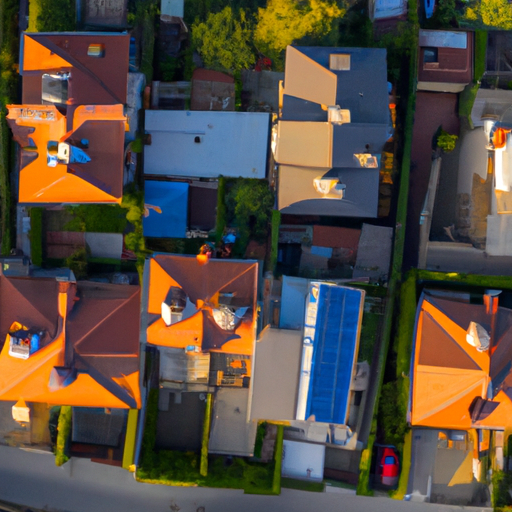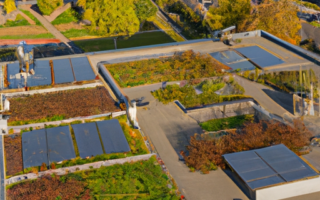The Most Common Types of Roof Construction: A Comprehensive Guide
When it comes to roof construction, there are several common types that are widely used in the industry. Each type has its own set of characteristics, advantages, and disadvantages. In this comprehensive guide, we will explore the most common types of roof construction and discuss their pros and cons.
1. Pitched Roof
The pitched roof, also known as a sloping roof, is one of the most popular and traditional types of roof construction. It consists of two or more sloping surfaces that meet at a ridge. Pitched roofs are commonly made of materials like shingles, tiles, or metal sheets.
Pros: Pitched roofs provide excellent drainage capabilities, as the slope allows rainwater to easily flow down. They also offer superior durability and longevity compared to flat roofs. Moreover, pitched roofs provide better insulation and ventilation, making them energy-efficient.
Cons: The cost of construction and installation for pitched roofs is generally higher compared to flat roofs. Additionally, these roofs require regular maintenance due to the presence of slopes, which can be challenging to navigate and repair.
2. Flat Roof
Flat roofs have a horizontal or nearly horizontal design, making them a common choice for commercial buildings and modern residential structures. They are typically constructed with a slight slope to facilitate water drainage.
Pros: Flat roofs are cost-effective and easier to construct compared to pitched roofs. They provide additional space for rooftop installations such as HVAC systems or solar panels. Flat roofs are also easily accessible for maintenance and repairs.
Cons: One major drawback of flat roofs is their limited drainage capabilities. Without proper maintenance and regular cleaning, water pooling can occur, leading to leaks and potential damage. Flat roofs also tend to have a shorter lifespan compared to pitched roofs.
3. Hip Roof
The hip roof is a type of roof construction with slopes on all sides. It consists of four triangular sides that meet at a ridge or hip. Hip roofs are commonly seen in residential buildings and are known for their aesthetic appeal.
Pros: Hip roofs offer excellent stability and resistance against high winds and extreme weather conditions. The slopes of a hip roof provide good drainage and prevent water pooling. They also create additional attic or loft space in the house.
Cons: The construction of hip roofs can be more complex and expensive compared to other roof types. The presence of multiple slopes can make installation and maintenance challenging. The design of hip roofs may also limit the space for windows and natural light.
4. Mansard Roof
The mansard roof, also known as a French roof, is a unique roof construction characterized by two slopes on each side, creating a double-pitched roof. The lower slope has a steeper pitch compared to the upper slope.
Pros: Mansard roofs provide additional living space in the attic, allowing homeowners to maximize the use of their property. They offer a distinctive architectural look and can enhance the curb appeal of a building. The design also allows for easy addition or expansion of the upper floor.
Cons: Mansard roofs require skilled craftsmanship and meticulous construction due to their complex design. The intricate structure can make repairs and maintenance more challenging and costly. Additionally, the steep slope of the lower section may limit accessibility.
These are just a few of the most common types of roof construction. Each type has its own advantages and disadvantages, and the choice ultimately depends on factors such as budget, climate, building design, and personal preferences. It’s important to consult with a professional roofing contractor to determine the most suitable roof construction for your specific needs.
Comparing the Pros and Cons of Different Roof Construction Methods
When it comes to choosing the right roof construction method for your building, it’s important to consider the pros and cons of each option. Different types of roof construction have their own unique advantages and disadvantages, which can impact the longevity, durability, and overall performance of your roof. Let’s take a closer look at some common types of roof construction and compare their pros and cons.
1. Asphalt Shingles
Asphalt shingles are one of the most popular and affordable options for residential roofs. They are readily available, easy to install, and come in a wide variety of styles and colors. The pros of asphalt shingles include their affordability, versatility, and decent lifespan of around 20-30 years. However, they are susceptible to damage from extreme weather conditions, may require frequent repairs, and can have a lower insulation value compared to other roofing materials.
2. Metal Roofing
Metal roofing is known for its durability and long lifespan. It can last up to 50 years or more with proper maintenance. Metal roofs are resistant to fire, insects, rot, and mildew. They are also lightweight, making them suitable for a wide range of buildings. However, metal roofs can be costly upfront and may require professional installation. They can also be noisy during rain or hailstorms if not properly insulated.
3. Tile Roofing
Tile roofing is popular in areas with a warmer climate due to their ability to reflect sunlight and provide better insulation. They are extremely durable and can last up to 50 years or more. Tile roofs come in various materials such as clay, concrete, and slate, offering a wide range of styles and colors. However, tile roofing can be expensive compared to other options, and the weight of the tiles may require additional structural support. They can also be fragile and prone to cracking if not installed or maintained properly.
4. Flat Roofing
Flat roofing is commonly used for commercial buildings and has its own set of advantages and disadvantages. Flat roofs are cost-effective and provide a usable space for rooftop installations such as HVAC units or solar panels. They are also easier to inspect and maintain. However, flat roofs have a higher risk of leaks and require regular maintenance to prevent water pooling and drainage issues. The lifespan of a flat roof can vary depending on the type of materials used.
When comparing the pros and cons of different roof construction methods, it’s crucial to consider factors such as cost, durability, maintenance requirements, and climate suitability. Each type of roof construction has its own trade-offs, and selecting the right one for your building will depend on your specific needs and preferences.
By understanding the pros and cons of various roof construction methods, you can make an informed decision and ensure that your roof provides the necessary protection and functionality for years to come.



